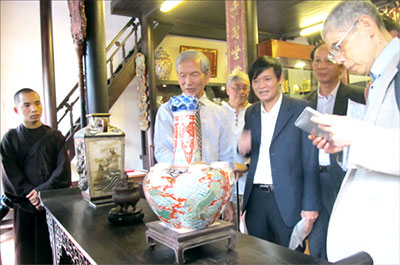Nguyen’s Dynasty Porcelain Museum of Hue City is showcasing the Japanese traditional ceramic and sculpture.

The exhibition shows 40 rare artifacts including porcelain with blue and white enamel glaze in the collection of the Japanese Imari ceramics in the 18th – 20th century and 50 sculpture handicrafts in the fine netsuke collection.
The artifacts are collected and introduced by Tran Dinh Son, the researcher. Traditional art of Japanese ceramics can be considered the best in the world due to many natural factors: the exchange influences from China, Korea and the West, and the Japanese talented artists and craftsmen with great passion and traditional cuisine art shown on sophisticated objects.
Imari porcelain is a famous product of the small town of Arita in the city of Imari, the centre of Saga province located on the island Kyushyu. Imari porcelain products were first released in Japan about 400 years ago during the Sengoku Period, also known as the Warring States period. Around the beginning of the seventeenth century, the North Korean potters discovered Kaolin in Arita, soon after, they made the first porcelain products in Japanese history.
Netsuke are small objects carved from wood, ivory, hippo canine teeth, even corns. They were invented in 17th-century in Japan to meet practical demand on helping people wearing traditional Japanese robes no pockets (such as kosode and kimono) but still carrying the personal items like money, rings, cigarette, etc.
The exhibition will last until the end of 2015.